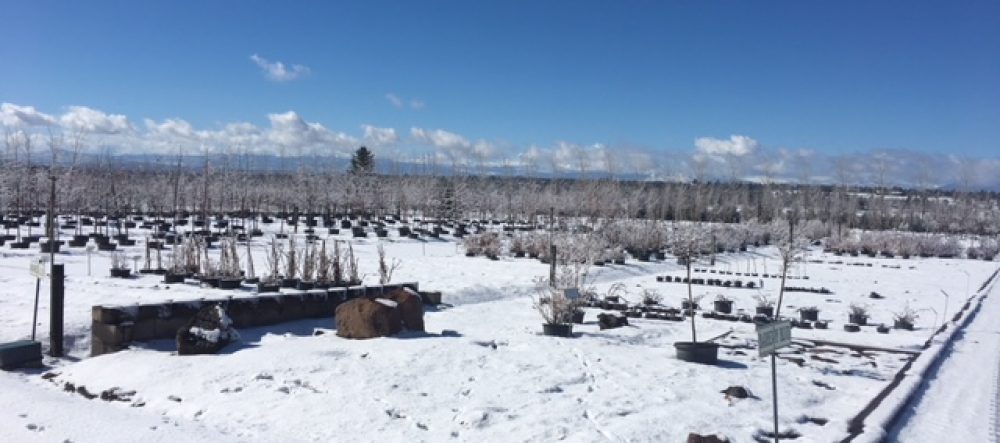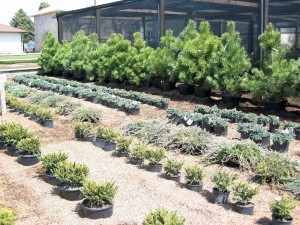McPheeters Turf and Nursery offers a wide variety of trees and shrubs of the highest quality for Central Oregon. The following are some tips for you to enjoy great success in your gardening endeavors.
What to do:
- Preparing The Ground For Planting: Dig holes wider than the container, but only as deep as the container. Fill the hole with water. Do not put fertilizers, composted materials, or manures in the hole. Fertilizers may burn the roots of the plant (all nursery stock is top dressed at appropriate times throughout the growing season). Compost and manures release nutrients at uncontrollable rates, which may contain highly soluble salts that are undesirable. Peat moss is a safe medium to put back into the hole to help hold moisture around the newly planted root ball.
- Transferring Plants From Container To Ground: Remove the plant from the container and place in the hole so that previous soil level is even with the ground around the hole. The proper planting depth should correspond to the depth that the plants were originally planted. This is easily distinguishable by the change of color where the root stock joins the top. fill the hole back with soil and peat moss. * If your trees are B&B (balled and burlapped), DO NOT remove the wire basket or burlap. To keep the roots intact and mostly undisturbed, place the whole ball in the ground. Once you have the tree straight and positioned, untie the string from around the trunk, fold back the tips of the wire basket and the burlap into the sides of the hole and finish filling your hole in. The burlap will rot and the wire basket will not affect the underground growth or health of the tree.
- Watering After Planting: Build dams around the trees in order to keep water from running off, allowing the water to penetrate straight to the roots. Water consistently throughout the growing season. Trees will need at least 20 to 30 gallons of water per tree per week. Shrubs will need 5 gallons three times a week. In extreme Central Oregon heat, increase amount of water applied and frequency. Success of plants in Central Oregon depends greatly on deep root systems that are established by deep waterings. Also, watering periodically throughout the winter protects plants and trees from their water supply being depleted due to dry and freezing weather.
- Staking Trees: We recommend that trees be staked the first year to allow for the tree roots to stabilize. Allow for some flexibility so the tree does not snap under extreme conditions. The main idea is to keep the base of the tree from rocking around; it is not detrimental for the top to blow around. After the first year, it is helpful for the strengthening of the tree to unstake it.
Planting trees and shrubs has been said to be an art and a science. Jim Mack, with Holden Arboretum in Ohio says, “Taking the time to plant a tree or shrub correctly takes no longer than planting one poorly ~ and replacing it later when it fails.”

